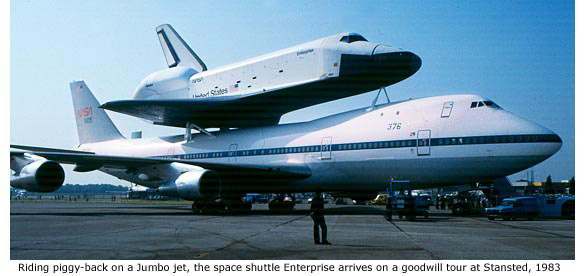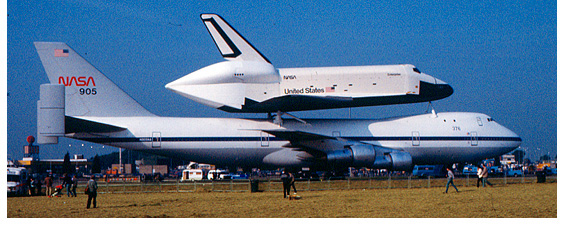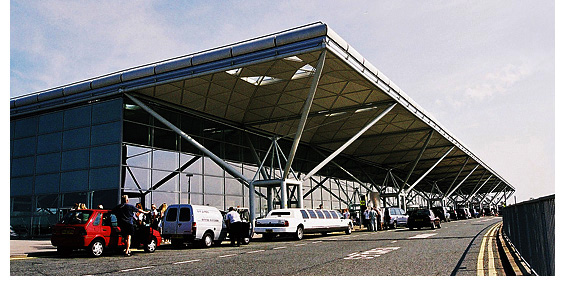|
Although Stansted airport is situated some six miles from the centre of Bishop’s Stortford, and sits firmly in the county of Essex, it is London’s third and most modern airport and has been an important factor in the town’s growth.
Its history as an airfield is relatively short, but since 1985 when work on the new airport began, archaeological excavations have revealed evidence of settlements from the Iron Age, middle Bronze Age and Roman periods – the earliest find dating back 4,000 years. Also revealed was a field system, possibly from the medieval period and initially interpreted as ridge and furrow.
For hundreds of years the area was just another part of the Essex rural landscape, but when the United States of America entered the Second World War in December 1941, it was destined to change forever. Airfields were needed within easy reach of occupied Europe, and the flat terrain of Essex made selection of sites relatively easy. Stansted airport was born.
It took its name from the nearby village of Stansted Mountfitchet, although when US Engineers of the 817th Battalion arrived to begin construction work in August 1942, they very quickly shortened it to the more manageable ‘Stansted’. When the 817th moved on a few months later, the work was finished by two other US Engineer Aviation Battalions – the 825th and 850th.
Covering an area of nearly 3,000 acres, the airfield was formerly opened on 7 August 1943 and designated as an Advanced Air Depot – the actual depot being sited to the east of the main runway near to the village of Takeley. In October that year it became home to the Ninth Air Force Service and was their largest base in East Anglia. Its more popular name was No 2 Tactical Air Depot, providing comprehensive aircraft supply, assembly, servicing and maintenance for all the Ninth Air Force groups stationed in Essex. The Ninth dealt almost exclusively with B-26 bombers.
For the thousands of US servicemen stationed at Stansted, as well as nearby Dunmow and Little Easton, the airfield soon became an American ‘township’. But not until February 1944 did the first operational combat group arrive – the 344th (Medium) Bomb Group known as ‘The Silver Streaks’. The name was probably derived from their badge, depicting four silver arrows or ‘streaks’ complimented by the motto ‘We Win or Die’.
Their very first operation, consisting of 37 crews, left Stansted on 6 March 1944 to bomb targets in Normandy, and on D-Day (6 June 1944) their reputation for bombing accuracy gave them the honour of leading all of the Ninth's B-26 groups on the first bombing mission of that historic day. In seven months of operational duties from Stansted, 146 missions were flown with 26 aircraft lost.
Stansted airfield was later known as station 169, the US Eighth Air Force using it as a base Air Depot for storing B-17s and P-47s. In late 1945 it was also used as a rest and rehabilitation centre for returning US servicemen, before finally being handed over to the Air Ministry in August of that year for use by the RAF as a Maintenance Unit. It was then known as RAF 263 MU. In 1946, 400 German prisoners-of-war were housed at the airfield, most of whom were deployed for agricultural and building work in April 1947, then later repatriated.
Also in 1946 the first charter flights were flown from Stansted. Under a lease agreement with the Ministry of Supply, a company named London Aero & Motor Services Ltd (LAMS) used ex-RAF Halifax bombers for long distance freighting work. Cargo included medical supplies to Belgrade and the collection of perishable fruits from the continent. One of LAM's flight engineers at that time was a certain Freddie Laker (1922–2006), whose entrepreneurial skills led him to found Laker Airways in 1966 and pioneer cheap air travel to America in the 1970s. He received a knighthood in 1978 in recognition for his contribution to commercial aviation and the British economy.
The Ministry of Civil Aviation finally took control of Stansted in 1949, but in 1954 the Americans returned – USAF Engineers (815th Battalion) given the job of extending the main runway for use by jet aircraft. After lengthening it to 3,048 metres, making it the longest runway in the country, they finally left in April 1957.
Today, the only evidence of America's short but memorable association with Stansted are a few wartime mementos and a brief record of events, all housed in a small display cabinet in the airport's passenger terminal.
In the years following the war the airfield served many purposes, including civil pilot training, aircraft production, and charter passenger and cargo flights. The airport's worth became more apparent in the late 1960s when the government of the day decided it should become London's third aiport. But local opposition to the plan was seriously underestimated and an alternative plan to site the third airport at Maplin Sands in the Thames estuary, was adopted.

Unforeseen at that time, though, was the world oil crisis in the early 1970s and the poor economic climate that followed, making development of Maplin too expensive to even contemplate. A more bouyant economy in 1979 put Stansted back on the agenda as London’s third airport but, as before, there was strong opposition. There followed the longest public inquiry on record and at its conclusion in 1985 the scheme was sanctioned, giving approval to handle up to 8 million passengers a year.
Work began on the new Stansted airport almost immediately. A road link to London (the M11 motorway opened in 1977) was already in place, and a rail link was constructed to bring passengers into the very heart of the new terminal building – architect Norman Foster’s jewel in the crown. His revolutionary design of a single-storey structure, held aloft by a minimal framework of ‘steel trees’, created a spaciousness and ease of access previously unknown in airport buildings. Taking five years to complete and costing in excess of £500 million, the new terminal was ceremoniously opened by the Queen in 1991.
Stansted’s reputation as a world-class airport then grew steadily, and with the introduction of ‘no-frills’ airlines in the mid 1990s became one of the most popular charter-flight airports. Government backing in 1999 enabled it to double its capacity from 8m passengers per year to 15 million, the present forecast for 2010 being 25 million passengers per year.
The latest episode in the airport’s ‘sometimes’ controversial development is a government proposal to build a second runway. To cater for this extra capacity a £200 million, five-year extension programme was started in 2000, which has so far resulted in a £60 million extension to Norman Foster’s original terminal building and two additional satellites along the aprons. Its local planning authority approved further investment of £250 million in September 2002 and it is estimated that by 2010 BAA will have invested around £1 billion in the airport. www.baa.co.uk/main/airports/stansted
See General Memories Page

|





